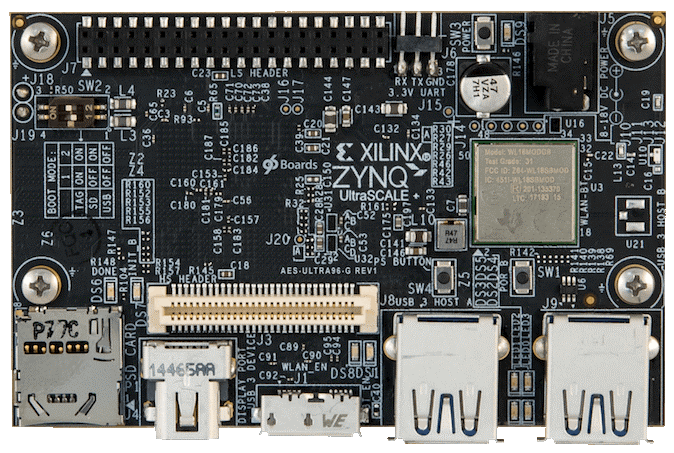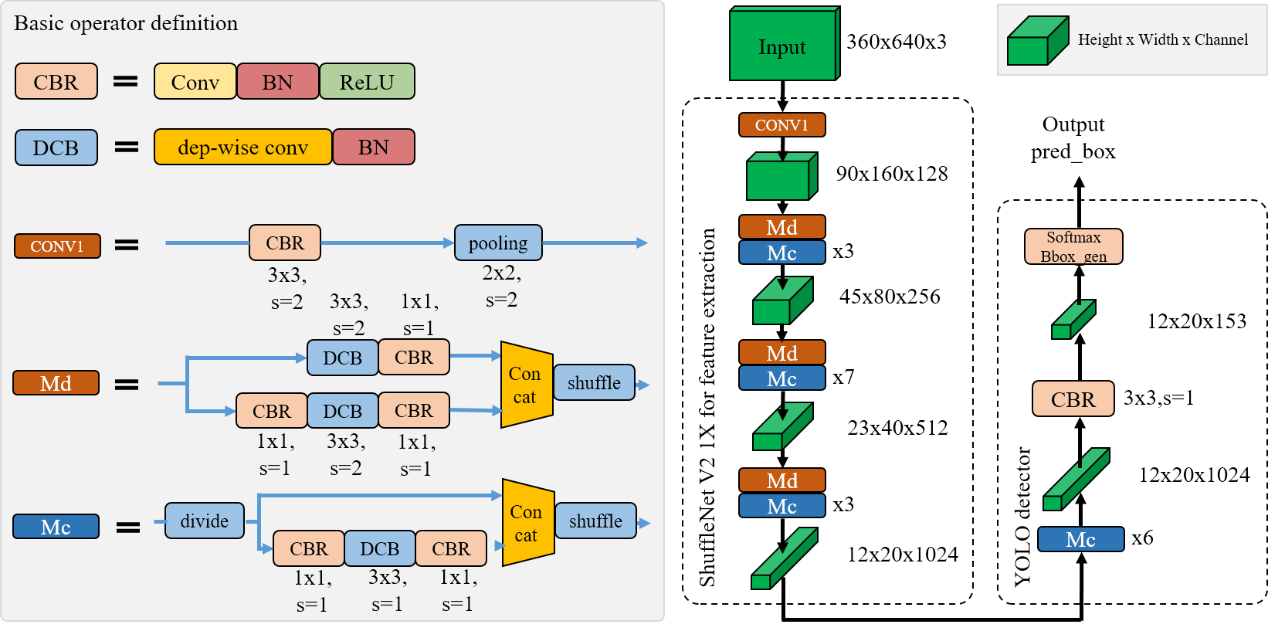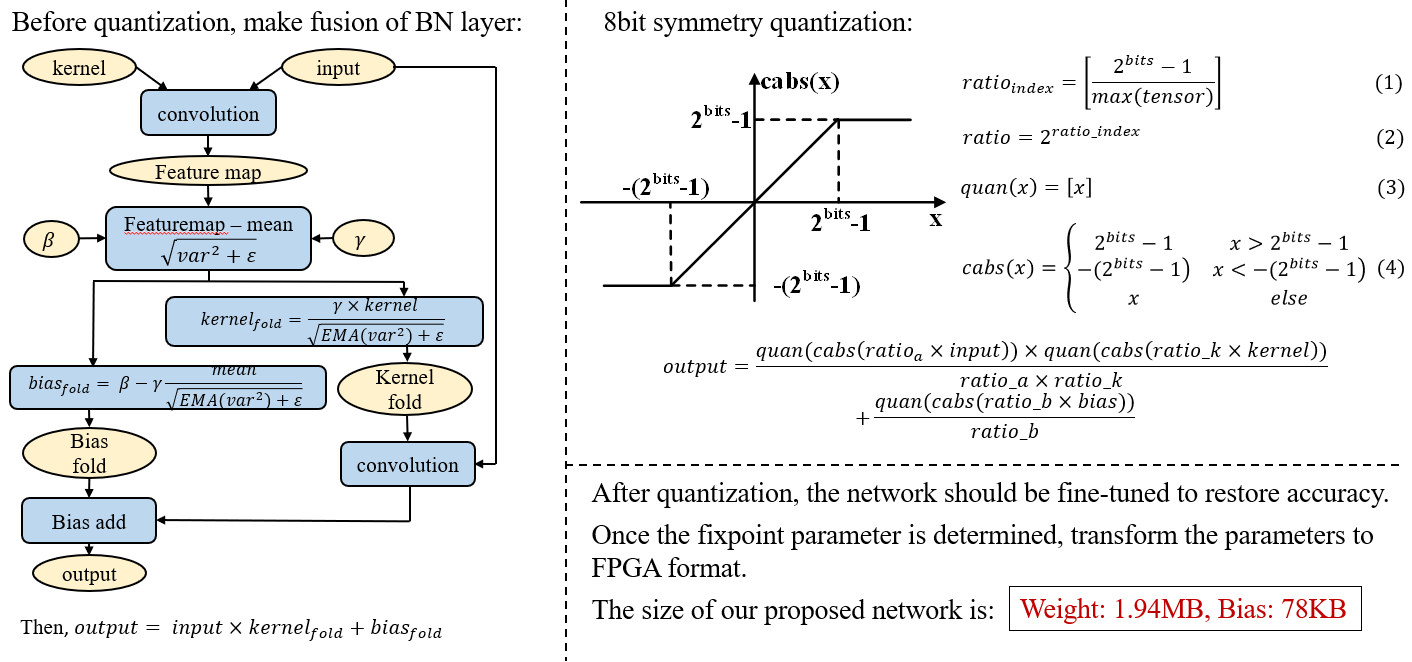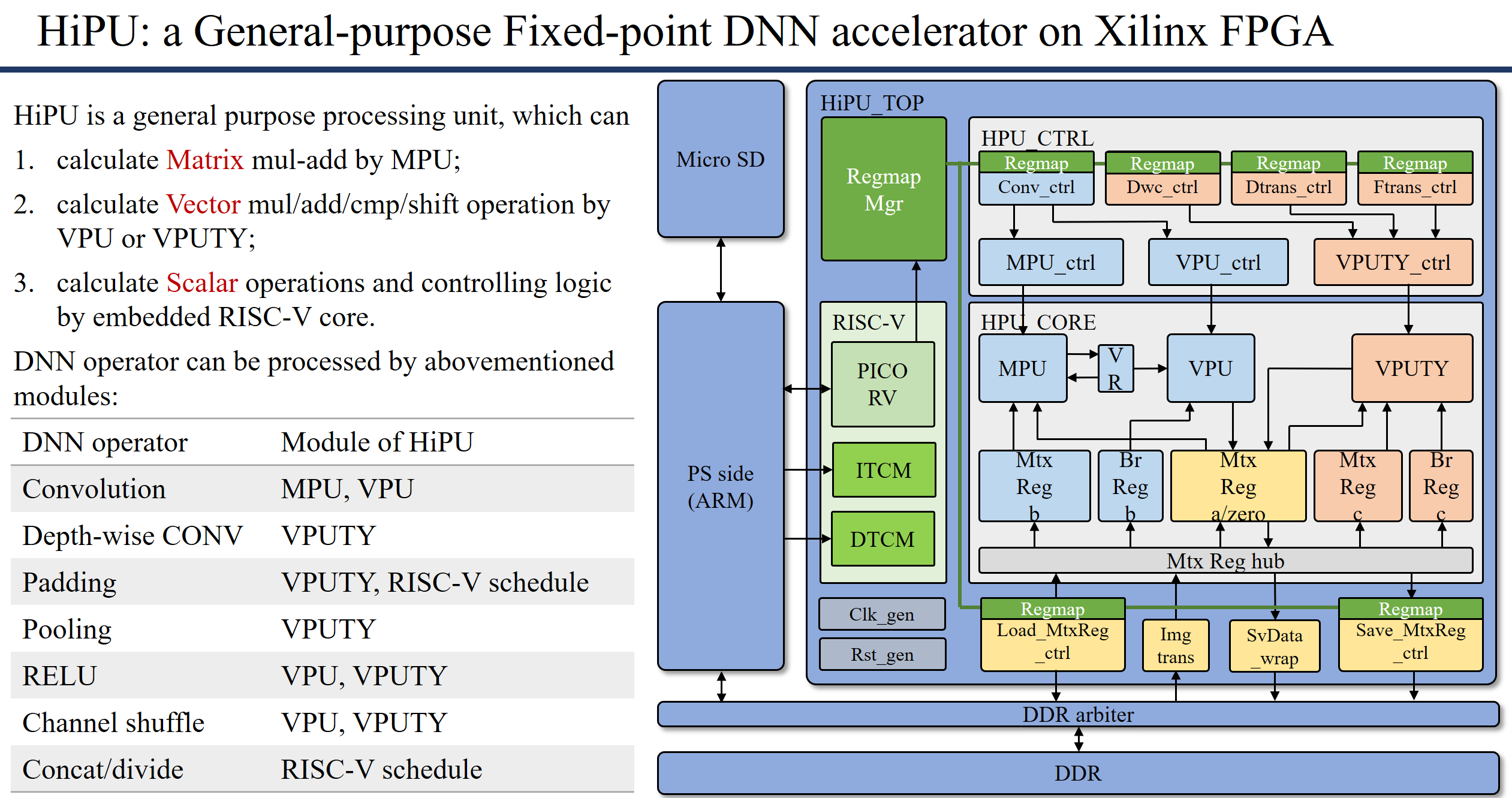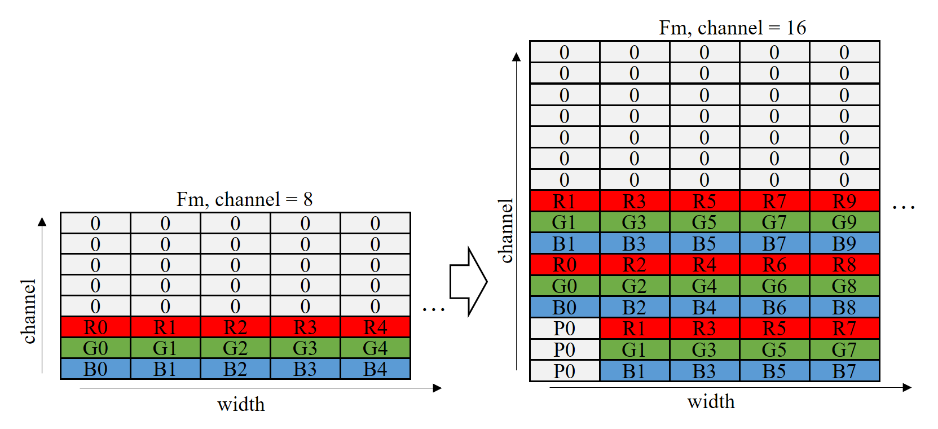The 2nd place winner's source codes for DAC 2019 System Design Contest, FPGA Track. Designed by
XJTU-Tripler Group, Institute of Artificial Intelligence and Robots, Xi’an Jiaotong University
Boran Zhao, Wenzhe Zhao, Tian Xia, Fei Chen, Long Fan, Pengchen Zong,Yadong Wei, Zhijun Tu, Zhixu Zhao, Zhiwei Dong, and Pengju Ren*
2019-06-21
The Design Automation Conference, is one of the world's most prestigious conference in EDA. The 56th DAC Conference was held in Las Vegas. Among them, the System Design Contest (SDC) aim at fast target detection for Edge-side devices. The competition was sponsored by Xilinx, DJI and Nvidia. The single target training data set include 90,000 images with resolution of 360x640,and the system test on 50,000 images. The accuracy IoU (Intersection over Union) higher and the energy consumption lower is the winner.
A team can choose the NVIDIA TX2 or Xilinx Ultra96 as design platforms. Our team participated in the FPGA track. The Ultra96 is an excellent ZYNQ development board designed for low-power IoT environments.The Ultra96's PS side is equipped with a quad-core ARM Cortex-A53 CPU running at 1.5GHz;the software can be developed using the Python-based PYNQ framework. The Ultra96 board and the PL side resources are shown in the figure below.
| PL resource of ZU3 | |
|---|---|
| LUT | 70K |
| FF | 141K |
| BRAM | 216 |
| DSP | 360 |
ZU3 Resource
Figure 1 Introduction to the FPGA development environment provided by Xilinx
In order to achieve a balance between detection accuracy and energy consumption, our team selected and optimized a lightweight neural network framework for the edge side. And for the resource limitation of ZU3, we simplified a DNN accelerator (HiPU) designed to support the general network anddeployed it on the PL. The main work have two parts: on the one hand, algorithm optimization, on the other hand, hardware architecture-HiPU:
The algorithm optimization mainly includes:
-
Select ShuffleNet V2 as the main frame for feature extraction;
-
Select YOLO as the regression framework for the single target detection;
-
Perform 8-bit quantization on the neural network.
The HiPU design feature:
-
Support CONV, FC, Dep-wise CONV, Pooling, Ele-wise Add/Mul, etc.the peak power is 268Gops, the efficiency is greater than 80%;
-
Supports Channel shuffle, divide, and concat operations without consuming extra time;
-
Provide C, RISC-V assembly interface API;
-
The HiPU is completely implemented in PL and does not depend on the PS. The main PS workload is image reading and result output.
the performance on the dataset of the testing set: the accuracy rate IoU is 61.5%; the energy consumption was 9537J, the image process speed was 50.91 Hz, and the power was 9.248W.
The dataset is provided by DJI, and some of the pictures are shown below. Before determining the algorithm, our team first analyzed the characteristics of the training data set:
-
The image size is 360x640, no need to resize for the following process;
-
All test pictures are from the UAV perspective. The size of the BBOX size varies from 36 pixels to 7200 pixels, and the algorithm needs to support difference shape BBox;
-
All pictures are in 12 categories (95 sub-categories), including boat (7), building (3), car (24), drone (4), group (2), horse-ride(1), paraglider(1) ), person (29), riding (17), truck (2), wakeboard (4), whale (1) category.
-
Even if multiple similar targets appear in one test image, the BBox must assigned a fixed target. That is, an appropriate over-fitting is required for training.
Figure 2 Part of the picture of the training set
In order to meet the real-time detection on the mobile device, our team finally selected YOLO as the basic detection algorithm. Replace the feature extraction network with the lightweight ShuffleNet V2. As shown in the figure below, we have customized our single target detection network,called ShuffleDet.
Figure 3 ShuffleDet Structure
Our team first pre-trained a standard ShuffleNet V2 classification network on the ImageNet dataset. After the model converges, the parameters of the feature extraction part are migrated to the ShuffleDet network. Use the DAC training set to train the parameters of other layers.
In order to adapt to the fixed-point operation on FPGA, after the whole parameter training is completed, all parameters need to be quantized. Our team quantified both network parameters and feature maps to 8bit. The quantization process is mainly divided into the following steps:
-
merging the BN layer into the parameters;
-
symmetrically quantifying the combined parameters;
-
if the quantized parameters are used directly, the precision loss is too serious. Therefore, after quantification, you need to fine tune the parameters. A schematic diagram of the quantization operation is shown in the figure below.
Figure 4 Quantification process of network parameters
After quantification, the ShuffleDet network we used has a convolutional layer of about 74 layers, a weight of about 1.94MB, and a Bias of about 78KB.
Since the HiPU designed is mainly for the application specific integrated circuit (AISC), the design implementation on the FPGA is mainly to verify the function. Therefore, for the computing platform provided by the game, we need to make appropriate tailoring needs to adapt to the resources of ZU3. The following figure shows the tiny HiPU design block diagram and its characteristics. The HiPU operates at 233MHz and its peak power is 268Gops. With C/RISC-V assembly as the programming interface, the convolution efficiency averages over 80%.
Figure 5 HiPU structure block diagram and characteristics
HiPU supports a variety of common NN operations, including: CONV, FC, Dep-wise CONV, Pooling, Ele-wise Add/Mul and other operations. FC can also achieve nearly 100% computational efficiency.
HiPU supports shuffle, divide, and concat operations in the channel direction. When these operations are immediately after the convolution operation, they can be merged on the hardware without consuming additional time.
HiPU can work on any kind of Xilinx FPGA and is not limited by the Zynq architecture.
The HiPU support matrix operations, vector operations, and scalar operations. Any type of parallel computing can be supported in the case of scheduling. In the future, optimization of sparse matrix operations will be implemented to support efficient DeCONV operations and feature map sparse optimization.
- Reduce the required DDR bandwidth by inter-layer cascading
HiPU design performance has two important aspects: one is the utilization of the MAC unit; the other is whether the data transmission network can match the data required. Most of the limitations of the data transmission network come from the DDR interface. This design is specifically optimized for the DDR interface.
Due to the size limitation of the SRAM in the HiPU, it is impossible to completely place the data of one layer of feature map in the SRAM of the HiPU. In the usual calculation order, the feature map calculation result of each layer needs to be returned to the DDR for storage. In this way, the feature map data of each layer needs a DDR access, the bandwidth requirement for DDR is very large, and it consumes additional power consumption.
Our team reduces the bandwidth requirements of DDR by cascading between layers. Using ShuffleNet's bottleneck as a unit, some row of feature maps is read from the DDR at the input of each bottleneck. After all the layers are calculated in turn, the output feature map is written back to DDR.The following figure shows the order of cascading calculation of Module C.
Figure 6 Module-C uses inter-layer cascade calculation
- Input image format conversion to improve processing efficiency
HiPU calculates 8 input channels in parallel at a time. However, the first layer of the network input image has only 3 channels of RGB, resulting in a HiPU calculation efficiency of only 3/8. Therefore, our team designed a conversion module for the input image. If the width of Conv1's kernel is 3, the channel of the input image is expanded from 3 to 9. Eventually, the processing efficiency of the first layer was increased from 0.38 to 0.56, and the conversion diagram is shown in the figure below.
Figure 7 Conversion of the input image in the row direction
- Image decoding and convolutional neural network computing parallelization
Since HiPU only relies on the resources of the PL, the resources on the PS side can be freed to do system IO related work. When the team processes the detection operation of the current picture, it pre-reads and decodes the next picture on the PS side to improve the parallelism of the processing, thereby increasing the overall detection frame rate from 30.3 Hz to 50.9 Hz.
The figure below shows a schematic diagram of parallelization of image decoding and convolutional neural networks.
(a) Workflow before parallelization
(b) Workflow after parallelization
- Use C code to speed up the original Python code on the PS side
Reconstructing the PS python operation with c : 1)Precalculate the address pointer of the confidence and BBox coordinates in the PL side data; 2) Find the largest Confidence and the coordinates of the corresponding BBox , and then calculate the absolute coordinates based on the relative coordinates;
- Use the gated clock to reduce the energy consumption
In order to reduce the energy consumption of the system, a gated clock strategy is designed. When the HiPU calculates a picture, it automatically turns off the clock, and then activates the clock when the next picture starts counting. Setting this strategy is based on two main reasons:
First of all, the time for the system to solve the jpg format picture is not fixed. When the SD card speed clase is not fixed, the average time is between 7ms-12ms, and the maximum resolution time of some pictures can reach 100ms;
Secondly, the system's power consumption measurement process and other overheads will take up part of the CPU time, and the PS and PL share the DDR bandwidth, which causes the HiPU to reach about 50hz at 166Mhz, but when the HiPU is increased to 200Mhz, the system The processing frame rate remains at around 50hz.
The above two reasons will cause the HiPU processing time and the picture jpeg solution time matching to become unfixed; when the HiPU processing image time is shorter than the image solving time, the HiPU will waste energy by "running empty".
The following table shows the results of the DAC19 competition. A total of 58 teams worldwide registered for the FPGA contest, but only 11 teams submitted the design (19% completion rate), compared with 52 teams on the GPU track. There are 16 teams submitting designs (30.8% completion rate), which can also reflect the difficulty of FPGA design. In the end, our team won the second place. The champion is iSmart3, which is jointly organized by UIUC, IBM and Inspirit IoT, and the third runner-up is SystemsETHZ from ETH Zurich. Through communication with other teams, our team uses the largest network of neural networks. The advantage is the high-performance DNN accelerator. Unfortunately, the optimization of the algorithm is not in place. The final results are as follows:
| DAC19 system design competition ranking | |||||
|---|---|---|---|---|---|
| Team Name | IoU | Power (mW) | FPS | Total Score | Rank |
| iSmart3 | 0.716 | 7260 | 25.05 | 1.526 | 1 |
| XJTU_Tripler | 0.615 | 9248 | 50.91 | 1.394 | 2 |
| SystemsETHZ | 0.553 | 6685 | 55.13 | 1.318 | 3 |
| Comparison of resources | |||||
| Team Name | Programing | LUTs | Flip-flop | BRAM | DSP |
| iSmart3 | HLS | 83% | 55% | 95% | 94% |
| XJTU_Tripler | Verilog | 65% | 41% | 91% | 98% |
| SystemsETHZ | HLS | 77% | 53% | 85% | 73% |
The ShuffleDet algorithm we designed is also deployed on the TX2 platform. The following table compares the two. It can be seen that the 8bits quantization resulted in an IoU loss of 0.056 (-8.3%), but resulted in a frame rate increase of 28.87 (+131%) and an energy reduction of 8309J (-46.56%).
Performance comparison of ShuffleDet on TX2 and Ultra96 FPGA platforms
| Platform | FPS | IoU | Energy(J) |
|---|---|---|---|
| TX2 | 22.04 | 0.671 | 17846.115 |
| Ultra96 | 50.91 | 0.615 | 9537 |
Our demos have been uploaded to video repository. You can find them from below link:
Dual-channel real time detection with DAC19 training set
Object detection & tracking from UAV
